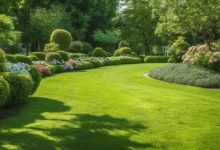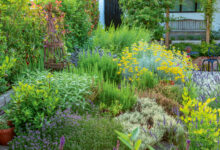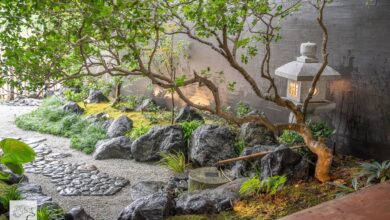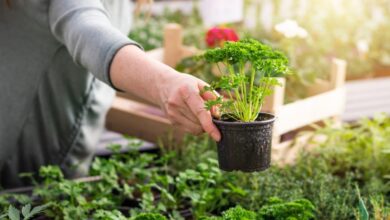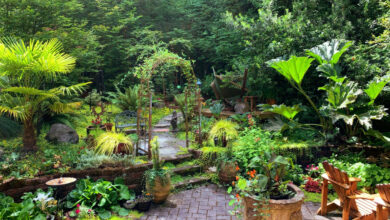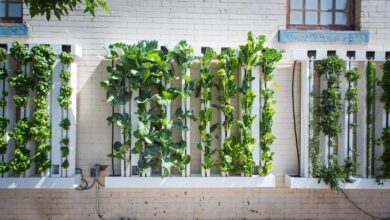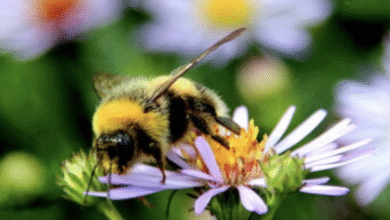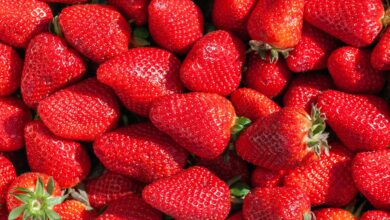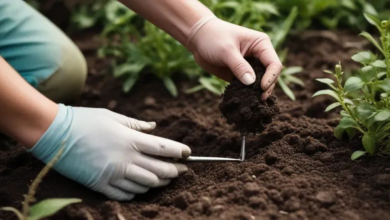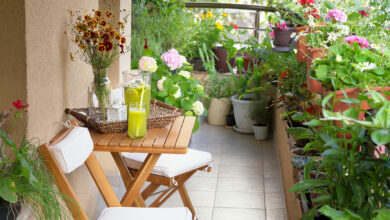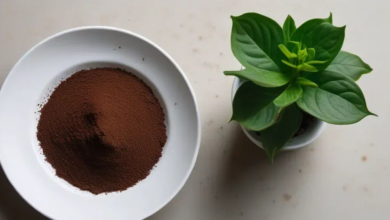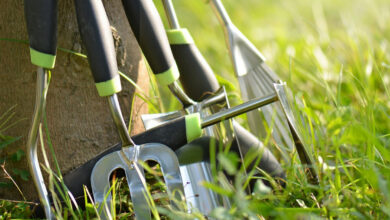How to Create a Productive Container Garden on Your Patio
Learn how to create a productive container garden on your patio with expert tips on containers, soil, vegetables, and maintenance for bountiful.
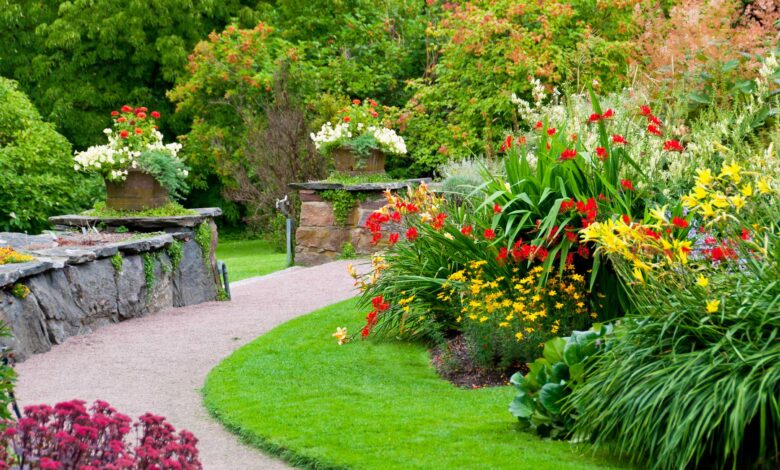
Transforming your patio into a productive container garden represents one of the most rewarding endeavors for both novice and experienced gardeners. Whether you’re limited by space constraints, poor soil quality, or simply prefer the flexibility of container gardening, creating a thriving garden in pots offers unparalleled opportunities to grow fresh vegetables, herbs, and flowers right outside your door. The beauty of patio container gardening lies in its accessibility—anyone with a balcony, deck, or small outdoor space can cultivate a surprisingly abundant harvest throughout the growing season.
Container gardening has surged in popularity as urbanization increases and more people seek to reconnect with their food sources. Unlike traditional in-ground gardens, growing vegetables in containers provides complete control over soil quality, drainage, and plant placement, allowing you to optimize growing conditions for each crop. This flexibility means you can move containers to follow the sun, protect plants from harsh weather, and even bring tender herbs indoors before the first frost. The productive container garden concept extends far beyond ornamental displays—with proper planning and care, your patio garden can yield substantial quantities of tomatoes, peppers, lettuce, herbs, and countless other edibles.
One of the most compelling advantages of container vegetable gardening is the elimination of many challenges that plague traditional gardens. Soil-borne diseases, persistent weeds, and invasive root systems become manageable or disappear entirely when you’re working with self-contained growing environments. Container gardens also enable individuals with physical limitations to garden at comfortable heights, reducing strain on backs and knees. Urban dwellers without access to yard space discover that even a modest patio can accommodate numerous pots and planters that collectively produce remarkable harvests.
Creating a successful container garden requires thoughtful planning, appropriate container selection, quality growing media, and consistent maintenance. The initial investment in proper containers, potting soil, and plants pays dividends through months of fresh produce and the satisfaction of growing your own food. As you develop your container gardening skills, you’ll discover the joy of harvesting sun-warmed tomatoes steps from your kitchen, snipping fresh herbs for dinner, and watching seedlings transform into productive plants under your care.
This comprehensive guide walks you through every aspect of establishing a productive container garden on your patio, from selecting appropriate containers and choosing the best vegetables to grow in pots to mastering watering techniques and troubleshooting common challenges. Whether you’re starting with a single tomato plant or planning an elaborate arrangement of diverse crops, these proven strategies will help you maximize your harvest and create a beautiful, functional patio garden that enhances both your outdoor living space and your table.
The Benefits of Container Gardening
Container gardening offers numerous advantages that make it an ideal solution for many gardeners, particularly those facing space limitations or challenging growing conditions. These benefits help you appreciate the potential of your patio garden and motivate consistent care throughout the growing season.
Space Efficiency and Flexibility
One of the primary benefits of growing vegetables in containers is the ability to maximize limited space. Even the smallest balcony or patio can accommodate multiple containers through strategic placement and vertical arrangements. Unlike in-ground gardens that require dedicated yard space, container gardens adapt to whatever space you have available. You can position pots on railings, hang baskets from hooks, stack tiered planters, and utilize every available square foot of your outdoor area.
The mobility of containers provides unprecedented flexibility in garden management. When plants outgrow their light conditions, you simply relocate them rather than redesigning entire garden beds. This portability proves especially valuable during extreme weather—you can move tender plants to sheltered locations during storms or into garages during unseasonable frosts. As seasons change, you can rearrange your patio container garden to optimize sunlight exposure, creating dynamic displays that evolve throughout the year.
Superior Growing Conditions
Container gardening gives you complete control over the growing medium, which directly impacts plant health and productivity. When you fill containers with high-quality potting mix, you eliminate concerns about poor native soil, heavy clay, or contaminated earth that plague many traditional gardens. This control over soil quality means your plants start with optimal nutrition, proper drainage, and ideal texture for root development from day one.
Temperature advantages also distinguish container gardens from in-ground plantings. The soil in containers warms faster in spring, allowing earlier planting of warm-season crops like tomatoes and peppers. This extended growing season translates to longer harvest periods and greater overall productivity. Additionally, raised containers provide better air circulation around plant foliage, reducing fungal disease pressure and promoting healthier growth.
Reduced Maintenance Requirements
Productive container gardens typically require less maintenance than traditional gardens once established. Weeding becomes virtually nonexistent since you’re starting with sterile potting soil rather than weed-seed-laden ground soil. The controlled environment of containers also reduces pest pressure—many soil-dwelling insects and diseases that plague in-ground gardens never encounter your container plants.
The ergonomic benefits of container gardening cannot be overstated. By selecting containers of appropriate heights or placing them on stands, you can garden at comfortable levels that minimize back strain and knee stress. This accessibility makes vegetable container gardening ideal for elderly gardeners, those with mobility limitations, or anyone who finds traditional gardening physically challenging. Harvesting, pruning, and maintenance tasks become more enjoyable when you’re working at convenient heights.
Choosing the Right Containers for Your Patio Garden
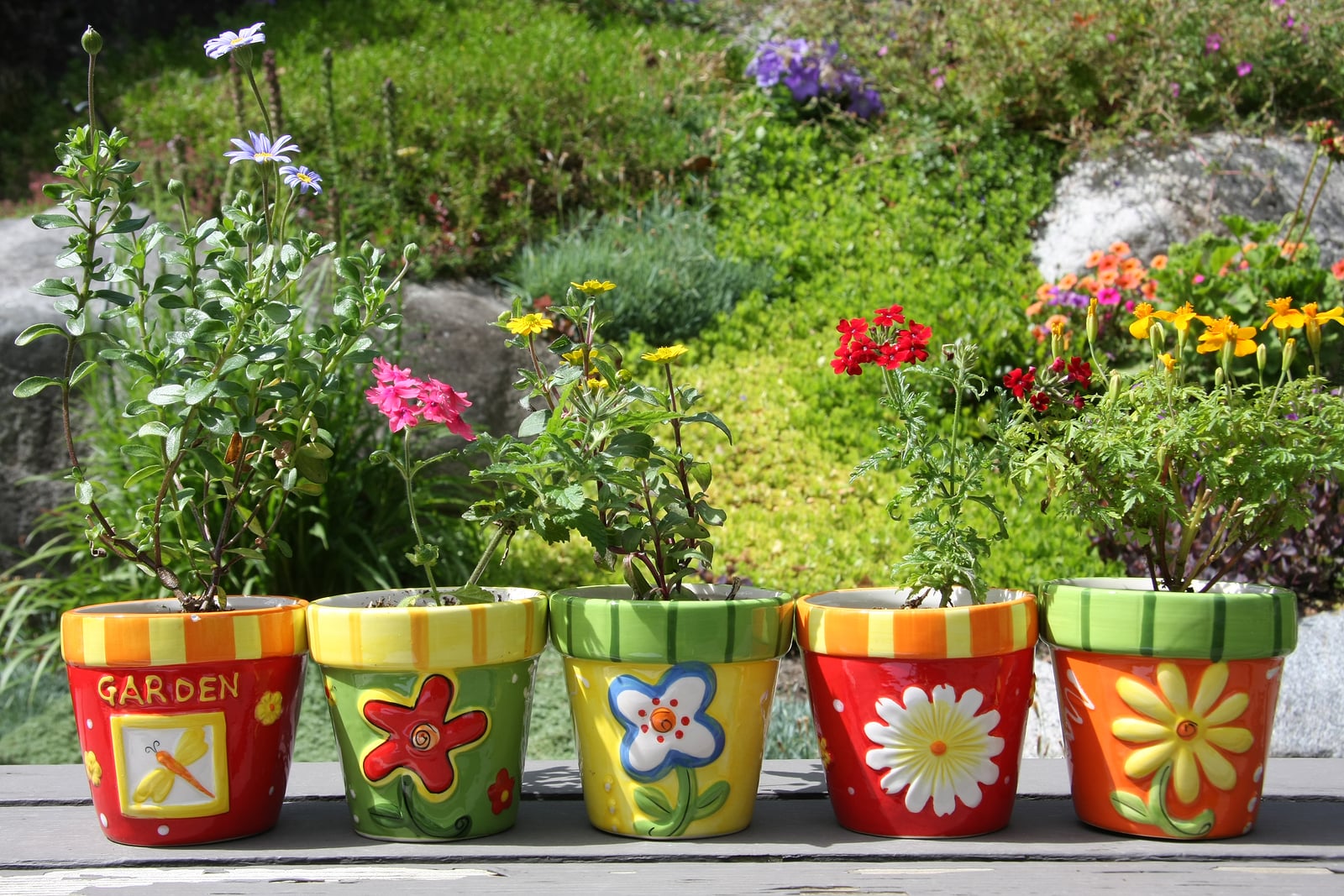
Selecting appropriate containers forms the foundation of your productive patio garden. The right pots and planters provide adequate space for root development, proper drainage, and aesthetic appeal while fitting your available space and budget.
Container Size Requirements
Container size directly correlates with plant success and productivity. Different vegetables require varying root space—shallow-rooted crops like lettuce thrive in containers just 6-8 inches deep, while deep-rooted vegetables like tomatoes need containers at least 12-18 inches deep and equally wide. As a general rule, bigger containers prove easier to maintain because they hold more soil, which buffers against rapid temperature fluctuations and drying.
For most vegetable plants, minimum container dimensions should provide adequate volume for root expansion. Cherry tomatoes perform well in 5-gallon containers (approximately 12 inches in diameter), while full-sized tomato varieties need 10-20-gallon pots. Peppers and eggplants thrive in 5-gallon containers, herbs do well in 1-3-gallon pots, and leafy greens succeed in shallow window boxes or wide, shallow planters. Root vegetables like carrots require deep containers—at least 12 inches—to accommodate their downward growth.
When space is limited, carefully evaluate which crops provide the best return on your container investment. Prolific producers like tomatoes, peppers, and herbs justify larger containers, while crops that mature quickly and can be succession planted—like lettuce, radishes, and spinach—make efficient use of smaller spaces. Consider the mature size of plants when planning container placement on your patio, ensuring adequate spacing for air circulation and light penetration.
Material Considerations
- Container materials significantly impact plant performance, maintenance requirements, and longevity. Each material offers distinct advantages and drawbacks worth considering for your patio container garden.
- Terracotta and clay pots provide excellent breathability, allowing air and moisture to pass through porous walls. This permeability prevents waterlogging but also means that more frequent watering becomes necessary. These classic containers add aesthetic appeal to patios and provide stability for top-heavy plants. However, terracotta cracks easily in freeze-thaw cycles, making it less suitable for year-round outdoor use in cold climates.
- Plastic containers dominate the market due to affordability, light weight, and durability. Modern plastic pots come in numerous styles mimicking more expensive materials while providing excellent moisture retention. Their lighter weight simplifies moving containers around your patio as sunlight patterns shift. Choose UV-resistant plastics to prevent degradation from sun exposure, and consider darker colors that absorb heat for warm-season crops or lighter colors that reflect heat for cool-season vegetables.
- Fabric grow bags have revolutionized container vegetable gardening through superior drainage and air pruning of roots. These breathable containers promote healthier root systems by preventing root circling and encouraging fibrous root development. Fabric bags fold flat for storage when not in use and typically cost less than rigid containers of equivalent volume. They work exceptionally well for potatoes, carrots, and other root crops. However, they dry out quickly and may not suit every patio aesthetic.
- Wooden containers and barrels provide rustic charm and excellent insulation properties. Cedar and redwood resist rot naturally, making them ideal for container gardening. Wooden planters accommodate large plants or multiple crops in a single container, creating mini garden beds on your patio. Line wooden containers with plastic to extend their lifespan, ensuring drainage holes penetrate both the liner and the wood.
Drainage Requirements
Proper drainage separates successful container gardens from waterlogged disasters. Every container you select must have adequate drainage holes in the bottom—water must be able to exit freely to prevent root rot and fungal diseases. A general guideline suggests containers 4-6 inches in diameter need 3-6 drainage holes of 1/4-inch diameter, while larger containers require 6-8 holes of similar size.
If you fall in love with a container lacking drainage holes, you can drill them yourself using appropriate bits for the material. Some gardeners place gravel or pot shards in container bottoms before adding soil, though research shows this actually raises the water table within the pot rather than improving drainage. Instead, ensure holes are adequate and use a quality potting mix with proper structure.
Consider using pot feet, bricks, or stands to elevate containers slightly above your patio surface. This elevation improves drainage, prevents staining on decks and concrete, and promotes air circulation around container bottoms, reducing disease risk. In areas with heavy rainfall, elevated containers prevent them from sitting in puddles that can reabsorb through drainage holes.
Selecting the Best Potting Mix for Container Vegetables
The growing medium you choose profoundly impacts the success of your productive container garden. Unlike in-ground gardening, where you amend existing soil, container gardening requires purpose-formulated potting mixes that provide proper drainage, aeration, and nutrition for plants confined to limited root space.
Why Garden Soil Doesn’t Work in Containers
Never fill your containers with soil dug from your yard or garden beds. Garden soil contains too much clay and compacts severely in containers, creating an oxygen-deprived environment that suffocates roots. The dense structure also drains poorly and dries into a rick-like consistency, creating conditions hostile to root development. Additionally, garden soil often contains weed seeds, pathogens, and pest eggs that become problematic in the controlled environment of pots.
Potting soil or potting mix specifically formulated for containers provides the necessary structure for healthy plant growth. These soilless mixes typically combine peat moss or coconut coir, vermiculite or perlite for drainage, and sometimes compost for nutrition. The result is a lightweight, well-draining medium that retains adequate moisture while providing roots with the oxygen they need to thrive.
Components of Quality Potting Mix
- Potting mix components help you select appropriate products or even create your own blend for container vegetable gardening. High-quality potting mixes balance water retention with drainage—a critical equilibrium in the confined space of containers.
- Peat moss or coconut coir forms the foundation of most potting mixes, providing structure and moisture retention. Peat moss acidifies soil slightly, benefiting acid-loving plants, while coconut coir offers a more sustainable alternative with neutral pH. Both materials hold water effectively while maintaining enough air space for root respiration.
- Perlite and vermiculite improve drainage and aeration in potting mixes. Perlite, made from heated volcanic glass, creates permanent air spaces that prevent compaction. Vermiculite, a mineral that expands when heated, holds both water and nutrients while still maintaining adequate drainage. Most quality potting mixes include one or both of these amendments to ensure proper moisture management in containers.
- Compost adds nutrients and beneficial microorganisms to potting mixes, though not all products include it. When present, compost reduces the need for immediate fertilization and improves moisture retention. However, too much compost can make the potting mix too heavy and water-retentive for containers. Look for products with balanced compost content or add your own finished compost at 10-20% of total mix volume.
Fertilizer Considerations
Most potting soils come with added fertilizer that sustains plants for several weeks to months, depending on formulation. Some contain time-release fertilizers that feed plants gradually over the growing season, while others provide only starter nutrition requiring supplementation within weeks. Read product labels carefully to understand what nutrition is included and plan your fertilization schedule accordingly.
For long-term crops like tomatoes and peppers in your container garden, establishing a regular feeding schedule ensures continued productivity. Water-soluble fertilizers applied every 1-2 weeks provide consistent nutrition, while slow-release granules incorporated into potting mix deliver nutrients gradually over months. Organic options like compost tea, fish emulsion, or seaweed extract support plant growth while building soil biology in containers.
The limited soil volume in containers means nutrients leach more quickly than in ground plantings. Each watering carries dissolved nutrients through drainage holes, necessitating more frequent fertilization than traditional gardens. Monitor your plants for signs of nutrient deficiency—yellowing older leaves, stunted growth, or poor flowering—and adjust your feeding program accordingly to maintain a productive container garden.
Best Vegetables and Herbs to Grow in Containers
Choosing appropriate crops maximizes productivity in your patio container garden. While nearly any vegetable can grow in containers given adequate space, some perform exceptionally well in confined conditions, delivering abundant harvests from relatively small pots.
Tomatoes: The Container Garden Star
Tomatoes reign supreme among container vegetables, offering prolific production and a diverse variety of options. Both determinate (bush) and indeterminate (vining) types succeed in containers, though determinates better suit smaller spaces. Cherry and grape tomato varieties like ‘Sweet 100,’ ‘Sun Gold,’ and ‘Tiny Tim’ produce abundantly in 5-gallon containers, while full-sized varieties need 10-20-gallon pots for optimal performance.
Select compact varieties specifically bred for container growing when space is limited. ‘Patio,’ ‘Bush Early Girl,’ and ‘Better Bush’ develop smaller plants that still produce full-sized fruit. Provide sturdy stakes or cages for support, as even compact varieties become top-heavy when laden with fruit. Position tomato containers in locations receiving 6-8 hours of direct sunlight daily for best yields.
Growing tomatoes in containers requires consistent moisture and regular feeding. Water deeply when the top inch of potting soil feels dry, and fertilize every two weeks with balanced fertilizer or weekly with diluted solutions. Prune suckers on indeterminate varieties to direct energy into fruit production, and remove lower leaves as plants mature to improve air circulation and reduce disease pressure.
Peppers and Eggplants
Peppers—both sweet and hot varieties—thrive in container gardens, producing continuously throughout warm months. They require less space than tomatoes, succeeding in 5-gallon containers with adequate depth. Compact varieties like ‘Lunchbox’ peppers, ‘Patio Baby’ eggplants, and ornamental hot peppers work beautifully in smaller pots while providing substantial harvests.
These warm-season crops need full sun and consistent warmth to produce well. Wait until nighttime temperatures reliably stay above 50°F before moving pepper and eggplant containers to their final patio locations. These heat lovers benefit from dark-colored containers that absorb warmth and promote root growth during cooler spring weather.
Leafy Greens and Salad Crops
- Lettuce, spinach, arugula, and other salad greens excel in container gardens, requiring minimal depth and tolerating partial shade. These cool-season crops grow quickly, allowing succession plantings every 2-3 weeks for continuous harvests. Shallow window boxes or wide, shallow planters work perfectly for creating mixed salad gardens on your patio.
- Growing lettuce in containers proves especially rewarding due to rapid germination and maturity. Harvest outer leaves continuously while plants continue producing, or cut entire plants at the soil level for cut-and-come-again harvests. Mix different varieties—crisp romaine, buttery Bibb, colorful oak leaf, and spicy arugula—in the same container for visual interest and culinary diversity.
Cool-season greens appreciate afternoon shade during hot weather and consistent moisture. Many varieties bolt (go to seed) quickly in heat, so time plantings for spring and fall growing seasons, or choose heat-tolerant varieties for summer production. In mild climates, leafy greens grown in containers produce through the winter months when provided with simple cold protection.
Herbs: Essential Container Crops
Herbs represent some of the most successful and rewarding container garden plants, offering fresh flavors, aromatic foliage, and often attractive flowers. Most culinary herbs prefer excellent drainage and full sun conditions, easily achieved in pots. Basil, parsley, cilantro, oregano, thyme, and rosemary all thrive in containers, providing fresh seasonings steps from your kitchen.
Group herbs with similar water and light requirements in the same containers for easier maintenance. Mediterranean herbs like rosemary, thyme, sage, and oregano prefer drier conditions and leaner soils, while basil, parsley, and cilantro need more moisture and richer potting mix. Annual herbs like basil and cilantro succeed in smaller containers, while perennial varieties benefit from more generous pot sizes.
Root Vegetables and Cucumbers
- Carrots, radishes, and beets grow surprisingly well in containers when provided with adequate depth. Choose shorter carrot varieties like ‘Paris Market’ or ‘Thumbelina’ for containers less than 12 inches deep, or use deep pots or fabric grow bags for longer varieties. The loose structure of potting mix allows straight root development that’s difficult to achieve in heavy clay soils.
- Cucumbers produce abundantly in large containers (5-10 gallons) with trellis support. Vining varieties save space by growing vertically, while bush types like ‘Bush Champion’ or ‘Patio Snacker’ stay more compact. Provide consistent moisture and regular feeding to support the heavy fruit production that cucumbers are capable of delivering.
Optimal Container Placement and Sunlight Requirements
Strategic container placement on your patio significantly impacts plant productivity. Sunlight patterns, exposure to elements, and accessibility help you create optimal growing conditions for your container garden.
Assessing Sunlight Availability
Most vegetables require 6-8 hours of direct sunlight daily to produce well, making sunlight assessment your first planning priority. Observe your patio throughout a typical day, noting which areas receive full sun, partial shade, or full shade. Remember that sunlight patterns shift with seasons—locations with full sun in summer may have substantial shade in spring and fall as the sun’s angle changes.
- Full sun locations receiving 6+ hours of direct sunlight support tomatoes, peppers, eggplants, cucumbers, and most fruiting crops. These highlight plants produce poorly in shade, developing weak stems, few flowers, and minimal fruit. Position these containers in your sunniest patio locations for maximum productivity.
- Partial shade areas with 3-6 hours of direct sun or dappled light all day work well for leafy greens, herbs like parsley and cilantro, and root vegetables. Many cool-season crops actually appreciate afternoon shade during hot weather, preventing premature bolting and bitter flavors. If your patio lacks full-sun locations, focus on crops that tolerate or prefer lower light levels rather than struggling with sun-loving plants.
Wind and Weather Protection
Wind exposure affects container gardens differently from in-ground plantings. Containers dry out rapidly in windy locations, requiring more frequent watering and potentially damaging tender plants through desiccation and physical damage. Excessive wind also interferes with pollination, reducing fruit set on crops like tomatoes and peppers.
Position containers near walls, fences, or other structures that provide wind breaks without creating excessive shade. On balconies or exposed patios, group containers together to create microclimates where plants buffer each other from wind. Stake tall plants securely to prevent toppling, and consider using heavier containers or adding weight to lightweight pots in particularly exposed locations.
Overhead protection from intense midday sun benefits cool-season crops during hot weather. Position lettuce and spinach containers where they receive morning sun but afternoon shade from structures or taller plants. Similarly, tender seedlings appreciate temporary shade cloth protection during their establishment period before hardening off to full sun exposure.
Accessibility and Maintenance Considerations
Place containers where you can easily access them for watering, harvesting, and maintenance. Container gardens hidden in patio corners or behind furniture receive inconsistent care, leading to neglected plants and disappointing harvests. Position your most frequently harvested crops—herbs, salad greens, cherry tomatoes—closest to your kitchen door for convenience.
Consider water source proximity when planning container placement. Container gardening requires consistent watering, sometimes multiple times daily during peak summer heat. Containers located far from water sources become chores to maintain, while those near hose connections or watering cans receive more consistent care. Installing drip irrigation systems or soaker hoses simplifies watering for larger container gardens.
Ensure adequate spacing between containers for air circulation and plant growth. While grouping pots creates visual impact, overcrowded plants compete for light and suffer from poor air movement, which promotes fungal diseases. Allow at least several inches between containers, and remember that plants grow substantially from their initial transplant size—space accordingly to avoid overcrowding at maturity.
Watering Strategies for Container Gardens
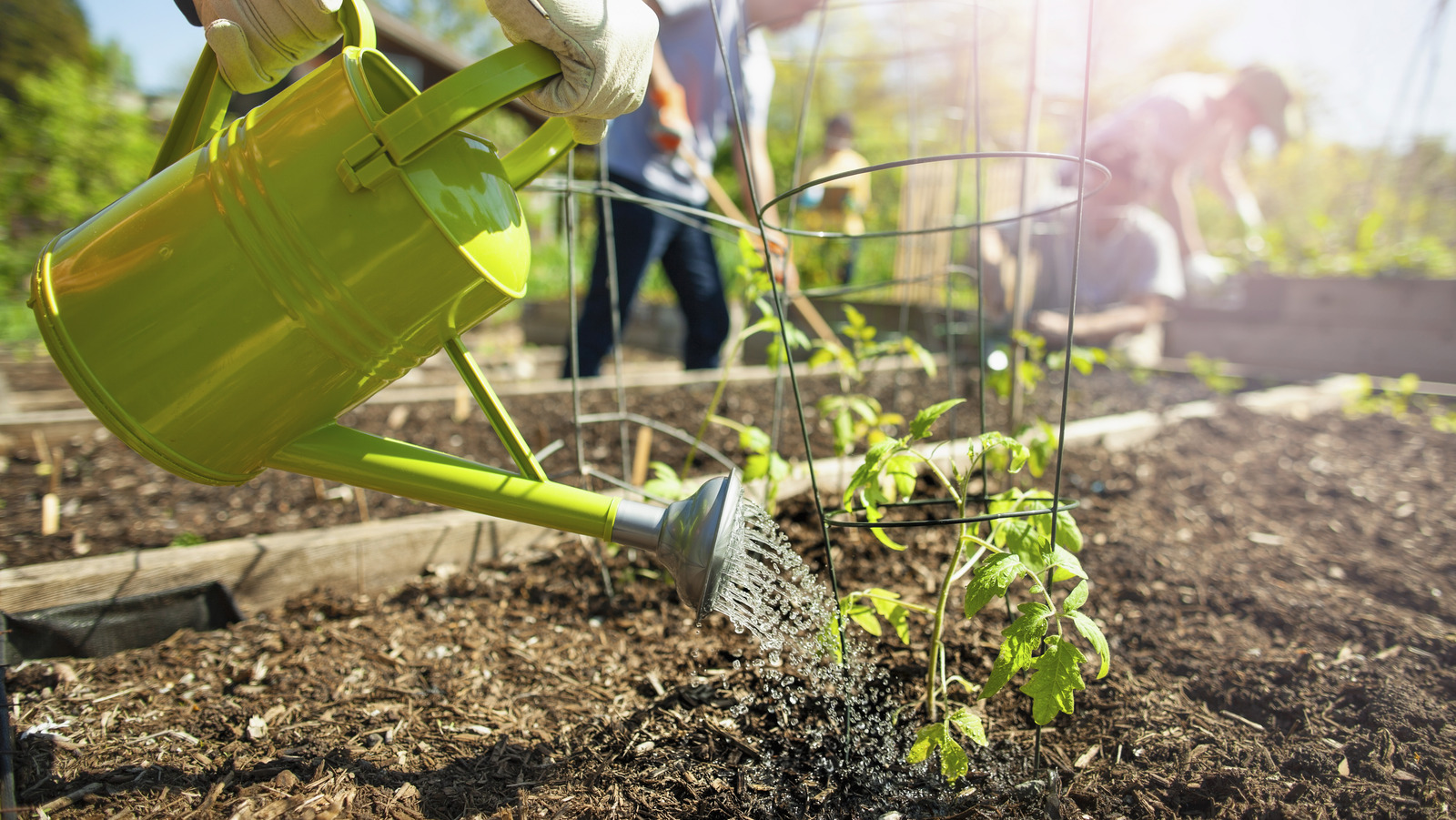
Proper watering represents the most critical maintenance task for productive container gardens. The confined soil volume in containers dries out much faster than ground plantings, requiring vigilant attention to moisture levels throughout the growing season.
Container Water Needs
- Containers lose moisture through multiple pathways—plant transpiration, evaporation from soil surfaces, and evaporation through porous pot walls (terracotta and fabric). Factors influencing water requirements include container size, material, plant size and type, weather conditions, and potting mix composition. Small containers in full sun during hot weather may require watering twice daily, while large containers in partial shade might need water every few days.
- Vegetable plants generally prefer consistent moisture rather than cycles of drought and flooding. Fluctuating moisture levels stress plants, resulting in problems like blossom end rot in tomatoes, cracked fruit, and reduced production. Maintain even moisture by checking containers regularly and watering before the soil becomes severely dry.
Test moisture levels by inserting your finger 1-2 inches into potting soil—if it feels dry at that depth, water thoroughly. Alternatively, moisture meters provide quick readings without disturbing roots. Containers feel noticeably lighter when the soil is dry; experienced gardeners often judge watering needs by hefting pots. During establishment, check newly planted containers daily until you understand their watering patterns.
Proper Watering Technique
Water containers thoroughly until water flows from drainage holes, ensuring the entire root zone receives moisture. Shallow watering encourages surface rooting that makes plants more vulnerable to drought stress. Apply water at the soil level rather than overhead to reduce foliar disease and avoid washing away potting mix. Drip irrigation or soaker hoses deliver water directly to roots efficiently, conserving water and reducing disease pressure.
Avoid leaving containers standing in water-filled saucers, which creates waterlogged conditions conducive to root rot. Empty saucers after watering, or use pot feet to raise containers above any collected water. In excessively hot weather, when plants wilt despite adequate moisture, temporary wilting may result from heat stress rather than drought—avoid overwatering, which compounds problems.
Mulching container surfaces with an inch or two of organic material—compost, shredded bark, or straw—conserves moisture and moderates soil temperature. Mulch reduces evaporation from soil surfaces, extending the time between waterings and creating more stable moisture conditions. As organic mulches decompose, they add nutrients to the potting mix, improving soil quality over the growing season.
Irrigation System Options
For larger container gardens, installing drip irrigation systems dramatically reduces maintenance while improving plant health through consistent moisture delivery. Drip systems can be customized for individual container needs, delivering precise water amounts on programmable schedules. While initial setup requires investment, the time savings and improved plant performance justify costs for serious container gardeners.
Self-watering containers incorporate water reservoirs that plants access through capillary action, reducing watering frequency substantially. These systems work well for consistently moisture-loving crops like lettuce and herbs, though plants preferring drier conditions (rosemary, sage) may suffer in constantly moist conditions. Self-watering containers prove especially valuable during hot weather or when you’re away for extended periods.
Fertilizing Container Vegetables
The limited soil volume in containers necessitates regular fertilization to maintain plant health and productivity. Nutrients leach quickly through frequent watering, requiring more attentive feeding than traditional gardens to support vigorous growth and abundant harvests.
Container Fertilizer Needs
Potting mixes typically contain enough nutrients to support plants for several weeks to months, depending on formulation. Once these initial nutrients deplete, you must supplement regularly to prevent deficiencies. Vegetable plants in containers are heavy feeders, requiring consistent nutrition to produce leaves, flowers, and fruits throughout the growing season.
Common nutrient deficiency symptoms include yellowing older leaves (nitrogen deficiency), purpling of leaves (phosphorus deficiency), and scorched leaf edges (potassium deficiency). Addressing deficiencies promptly prevents permanent growth setbacks and reduced productivity. However, prevention through regular feeding proves more effective than correcting deficiencies after they appear.
Fertilizer Types and Application
Water-soluble fertilizers provide immediate nutrition that plants absorb quickly through roots and foliage. These fast-acting products work well for container gardens where you can precisely control feeding frequency and concentration. Dilute fertilizers to half-strength and apply weekly rather than full-strength every two weeks for more consistent nutrition with less risk of burning roots.
Slow-release granular fertilizers incorporated into the potting mix at planting provide steady nutrition over months. These products release nutrients gradually with each watering, reducing feeding frequency while maintaining consistent availability. Supplement slow-release fertilizers with occasional water-soluble applications during peak growth and production periods for optimal results.
Organic fertilizers like compost tea, fish emulsion, kelp extract, and worm castings support plant growth while building beneficial soil biology. These products release nutrients more slowly than synthetic fertilizers and provide additional micronutrients and beneficial compounds. Many container gardeners prefer organic approaches for vegetables they’ll consume, appreciating the soil-building properties and reduced environmental impact.
Feeding Schedules for Different Crops
Leafy greens benefit from nitrogen-rich fertilizers that promote lush foliage growth. Feed lettuce, spinach, and chard weekly with balanced or high-nitrogen fertilizers throughout their growing period. These fast-growing crops need consistent nutrition to produce tender, flavorful leaves.
Fruiting crops like tomatoes, peppers, and cucumbers require balanced nutrition during vegetative growth, transitioning to higher phosphorus and potassium formulations once flowering begins. This nutritional shift supports flower and fruit development rather than excessive foliage. Feed weekly throughout the growing season, and monitor plants for signs of deficiency requiring additional supplementation.
Herbs generally require less fertilization than vegetables, with many Mediterranean varieties preferring lean conditions. Overfeeding herbs can reduce essential oil concentration that provides their characteristic flavors and aromas. Feed herbs monthly with diluted fertilizer, and adjust based on growth rates and foliage appearance.
Common Challenges and Solutions
Container gardening presents unique challenges requiring different management strategies than traditional gardens. Common problems and their solutions help you maintain a productive patio garden throughout the growing season.
Dealing with Pests
While container gardens face fewer pest pressures than in-ground plantings, aphids, spider mites, whiteflies, and caterpillars still find patio vegetables. Regular inspection catches infestations early, when hand-picking or water sprays effectively control problems. Examine leaf undersides, new growth, and flowers where pests typically congregate.
Encourage beneficial insects like ladybugs and lacewings by including flowering plants near your vegetable containers. These predators control many common pests naturally without chemical interventions. In severe cases, insecticidal soaps or horticultural oils provide organic pest control that’s safe for edible crops.
Managing Diseases
Fungal diseases like powdery mildew and early blight affect container vegetables under stressful conditions. Promote disease resistance through proper spacing for air circulation, watering at the soil level rather than overhead, and removing affected foliage promptly. Avoid working among plants when foliage is wet, which spreads fungal spores.
Root rot results from overwatering or poor drainage, appearing as wilting despite moist soil and potentially foul-smelling roots. Prevention through proper container selection, adequate drainage holes, and appropriate watering practices proves more effective than treatment. Once root rot establishes, affected plants rarely recover.
Temperature Stress
Extreme temperatures stress container plants more than in-ground gardens. During heat waves, soil temperatures in containers can soar, damaging roots and reducing plant productivity. Mulch container surfaces, group pots together to create microclimates, and consider moving containers to shaded locations during the hottest part of the day.
Cold snaps threaten tender plants in containers, where exposed roots lack insulation. Move containers against buildings, cover with fabric, or bring them indoors temporarily to protect plants from unexpected frosts. Many herbs and cool-season crops tolerate light frost, but warm-season vegetables like tomatoes and peppers require protection even from near-freezing temperatures.
Maximizing Your Container Garden’s Productivity
Strategic planning and ongoing management maximize yields from your patio container garden. Implementing proven techniques extends growing seasons, increases harvests, and ensures continuous production throughout the year.
Succession Planting
Rather than planting all seeds at once, stagger plantings every 2-3 weeks for crops that mature quickly. Lettuce, radishes, beans, and herbs benefit from succession planting that provides continuous harvests rather than overwhelming gluts followed by gaps. As early plantings finish, replace them with new seedlings or seeds to maintain productivity.
In larger containers, interplant quick-maturing crops with longer-season vegetables. Radishes sown among tomato plants mature before tomatoes need the space, maximizing container productivity. Similarly, leaf lettuce grows between pepper plants early in the season before heat makes growing greens challenging.
Vertical Growing Techniques
Maximize space efficiency by training vining crops vertically using trellises, stakes, cages, or walls. Tomatoes, cucumbers, pole beans, and peas grow upward naturally, freeing patio space while improving air circulation and sun exposure. Many compact varieties of traditionally sprawling crops—squash, melons—now train on supports, making them viable for container gardens.
Vertical growing also improves harvest quality by keeping fruits off soil surfaces where they’re prone to rot and pest damage. Support structures installed at planting prevent root damage from later installation, and sturdy construction withstands the weight of mature plants laden with fruit.
Season Extension Strategies
Extend your growing season beyond typical frost dates using simple season extension techniques. Cold frames, row covers, or even cardboard boxes provide temporary protection during cool nights, allowing you to start plants earlier in spring and continue harvests later into fall. Many container gardens produce year-round in mild climates with basic cold protection.
Move containers indoors or to protected locations like garages or porches during severe weather, then return them outside when conditions improve. This mobility allows you to push growing seasons in ways impossible with in-ground gardens, dramatically increasing annual productivity.
More Read: Best Self-Watering Planters for Busy Gardeners in 2025
Conclusion
Creating a productive container garden on your patio transforms limited outdoor spaces into abundant sources of fresh vegetables, herbs, and edible flowers while providing immense satisfaction through hands-on food production. By selecting appropriate containers with proper drainage, filling them with quality potting mix, choosing suitable crops for your conditions, and providing consistent care through watering and fertilization, you can achieve remarkable harvests rivaling traditional gardens. Container gardening offers accessibility, flexibility, and control over growing conditions that benefit both novice and experienced gardeners, while eliminating many challenges associated with in-ground cultivation.
Whether you’re growing cherry tomatoes in 5-gallon pots, cultivating salad greens in window boxes, or establishing a complete patio vegetable garden with diverse crops, these proven strategies set you on the path to success. As you develop your container gardening skills through practice and observation, you’ll discover the profound pleasure of harvesting homegrown produce steps from your kitchen, creating a sustainable, productive, and beautiful container garden that enriches your outdoor living space and your table throughout the growing season and beyond.
